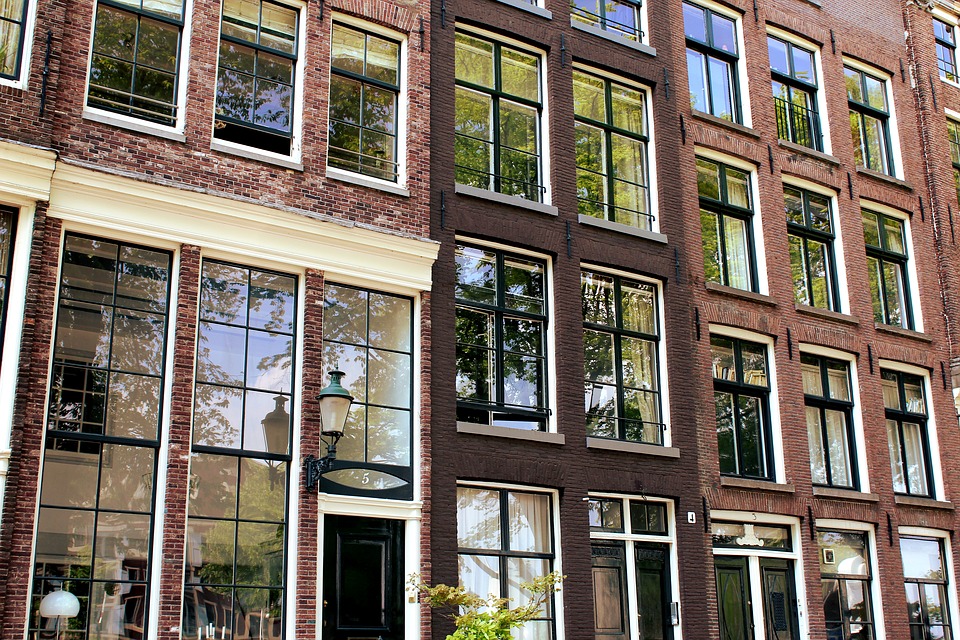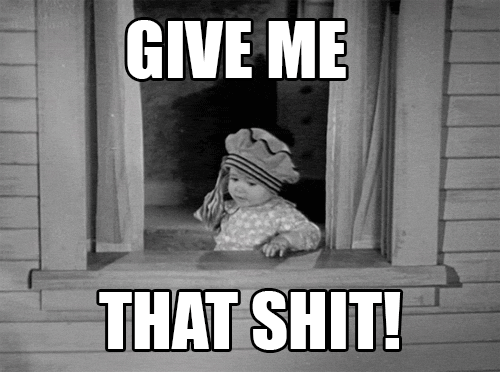All you need to know about buying a house and getting a mortgage in the Netherlands in 2019!
Things are going nicely in the Netherlands and you might be thinking that 2019 is the year you’re going to buy a house in the Netherlands. And why not? You’ve got to live somewhere, and with rental prices ever increasing in the Netherlands buying a house seems like the easy way to go.
Well, buying a house in the Netherlands in 2019 might be easy in the financial-end-result-sense maybe, but not so easy as just dropping a bag of money at the realtor and just grabbing the keys. Unless you’ve got an actual bag of money, you’re going to need a mortgage to buy a house in the Netherlands. So what has changed in 2019 when it comes to getting a mortgage in the Netherlands?
Since I’ve only got one mortgage (which is enough, thank you) and the good people of MortgageMonster have helped tons of people getting a mortgage in the Netherlands. We once again teamed up with MortgageMonster to bring you this article on all the changes in 2019 you need to know when you want to buy a house and get a mortgage in the Netherlands.
Before getting started, a little sidenote for more information about getting a mortgage in the Netherlands in 2019: You can also find out more about how to rent or buy a house in The Netherlands, How to get a mortgage in The Netherlands, last but not least how to get a mortgage as a student or a freelancer!
Time to see now what has changed when you want to obtain a mortgage in the Netherlands in 2019!

#1 The National Mortgage Guarantee (aka Nationale Hypotheek Garantie)
The upper limit of the National Mortgage Guarantee (NHG) will be substantially increased in 2019. This will go from € 265,000 to € 290,000. An increase of € 25,000. This is happening because house prices in the Netherlands have risen sharply in recent years. In Amsterdam and Utrecht the average housing prices are already above this limit.
What is the NHG you might think? Well, the NHG ensures that you do not end up with a residual debt if you have to sell your house at a loss as a result of unemployment, or not being able to work or a divorce. So basically, it’s coverage for the ordinary man against a big debt after you need to sell your house after unforeseen misery. This kind of makes it a no-brainer to get, even more considering that getting the NHG means that your mortgage interest rate will drop by a full percent!
NHG premium falls to 0.9%
Even more good news: the premium for the National Mortgage Guarantee is reduced by 0.1%. A home buyer pays 0.9% for this ‘insurance’ in 2019. With the maximum mortgage (guarantee) of € 290,000 you therefore pay € 2,610. That seems like a lot of money (it is) but you get a lower mortgage interest in return and that can make a big difference in the monthly costs. And even better, the costs for the NHG are tax deductible.
#2 Housing prices in the Netherlands in 2019
The good and bad news if you’re looking to buy a house in the Netherlands, is that housing prices have significantly risen over the past few years. Maybe not so good if you’re a first-time buyer, but great as an investment (at least at this rate you’ll be selling for a lot more than you bought).
The price of new buildings has gone up by 50% over the past 3 years. The average price of a new-build home is 400,000, whereas an older house is 292.000. The Netherlands actually has the 2nd-fastest rise in house prices in Europe (after Slovenia).
This year house prices are expected to rise yet again, but only much slower than in previous years (between 4-7%) – the Amsterdam prices even seem to slow down somewhat!
#3 You can get a higher mortgage in the Netherlands in 2019
Good news if you just fell a couple of (thousands) euro’s short for matching the asking price for your Dutch dreamhouse. The maximum mortgage that you can get in the Netherlands has increased in 2019!
The mortgage standards are determined annually by the Nibud. So since the general income level has gone up; the actual amount of money that you can get with a mortgage in the Netherlands has gone up as well in 2019. Whether you are a single or two-earner and no matter what the current interest rate.
In order for you not to do the math, or me for that matter, I’ve asked MortageMonster what this meant in practice. MortgageMonster told me that most people will be able to borrow approximately € 4,000 to € 5,000 more.
Might just be that little extra money you need, better check with MortgageMonster what’s possible now when it comes to you obtaining a mortgage in the Netherlands.
#4 Almost no own money needed when buying a house! Because the ‘Loan-to-value’ remains at 100% in 2019
How much mortgage you can get for a Dutch home (where you actually wil live) depends, among other things, on the value of the house. This is also called the loan to value (LTV for short).
In the past you could borrow more than the house was worth, up to 108%. So you would actually get more money than was needed to purchase the house, money you could use for refurnishing or that big juicy flatscreen (guilty!).
In recent years, the LTV has been gradually phased down. There are people calling for the LTV to be limited to 90 or even 80% of the house value (just like in Germany -where you need to bring money to the table in order to get a mortgage and buy a house), but for the time being, it will still be at a neat 100%.
This does mean that you will have to pay the additional costs such as transfer tax, valuation, notary, advice etc. yourself. Better take into account an extra cost of 4-6% of the house value. But overall, you don’t need that much money of your own to buy a house in the Netherlands in 2019.
But good news for you sustainable folks out there! There is an exception for people who also invest in energy-saving facilities when buying a house in the Netherlands. They may borrow up to an LTV of 106%, provided they fully use this additional money for energy-saving measures. We’re talking about investing in wall, floor- or roof-insulation, HR ++ (+) glass or solar panels of course!
#5 Housing in the Randstad in 2019
The Dutch housing market in the Randstad, especially in Amsterdam is still pretty crazy, but it is getting better slowly. For the first time in a long time, the increase in prices in Amsterdam is lower than the national average. This is good news if you’re looking to buy a house in the Netherlands. The fact of the matter is, it’s so high, that it has to slow down or it’s not sustainable. So again, good and bad.
It might look super expensive, but thankfully it is starting to slow down, and some of you just need that house in the Randstad, right?

#6 The VAT is up, but income tax is down (and you don’t pay VAT when you buy a house in the Netherlands)
First the bad news. The low VAT-rate rises from 6% to 9% in 2019. Many basic services and goods, such as groceries, fall under the low VAT rate. And I’m going keep it honest here, some of these things and services that you might want to get when you’re buying a new house in the Netherlands also fall under this low VAT-rate. Think about a crew coming to your house for painting, plastering, wallpapering, insulation and cleaning. This kind of work will be, roughly, three percent more expensive in 2019.
But there’s good news too, the income tax is going down! Basically, everybody should be getting a tad bit more money in 2019, especially the middle incomes!
These are the new tax brackets:
| Income | 2019 NEW | 2018 how it was |
| Up to € 20,142 | 36.55% | 36.55% |
| Up to € 68,507 | 38.10% | 40.85% |
| From € 68,507 | 51.75% | 51.95% |
#7 Want to know more about getting a mortgage in the Netherlands in 2019? Talk to MortgageMonster!
Read this article and now thinking “Hey, I’m gonna buy this house in the Netherlands now Dutchreview, but can I really get a Dutch mortage?” Well my friend, we’ve got just the people to talk to about this one.
If you’re serious about obtaining a mortgage in the Netherlands then the good people at MortgageMonster are happy to help you with a personal conversation to explore your possibilities for a mortgage in The Netherlands.
It’s there where you can get a rough idea of how much you can borrow with a Dutch mortgage. MortgageMonster has this excellent tool for calculating your potential mortgage in the Netherlands, 30% ruling taken into consideration and everything.
Pro-tip: use a mortgage intermediary!
I can really recommend using an intermediary for securing a Dutch mortgage. Especially when this is your first time buying a house in the Netherlands. That way you don’t have to deal with the bank together, they get you the best rates and there’s somebody to hold your hand (if you ask them politely). They also know the situation at all banks and lenders, which is good because who wants to be depended on the advice of just one bank?
The first conversation with a mortgage intermediary like MortgageMonster is for free and without any strings attached what-so-ever. It’s always a good idea to do this since an explanatory conversation like this will make things a lot clearer.
In case you do decide to let MortgageMonster help you out with securing your mortgage in the Netherlands then they will go for that tailored approach you need. They can and will help throughout the entire process, thus from purchase to the sealing of the deal at notary and everything in between. It’s a one-stop shopping concept for buying a house. And in case you’re wondering, most Dutchies use an intermediary as well since this stuff is complicated!
MortgageMonster also gets you all the explanation and documents in English, which is really handy since this is all rather complex in English – let alone in Dutch. (Check out the MortgageMonster website and fill out the contact form to set up a meeting!)
Are you thinking of buying a house in the Netherlands in 2019? Have you looked at getting a Dutch mortgage in 2019? Drop us a comment!
Want to read up some more about getting a mortgage in the Netherlands in 2019? You can also find out more about how to rent or buy a house in The Netherlands, How to get a mortgage in The Netherlands, and last but not least how to get a mortgage as a student or a freelancer!




